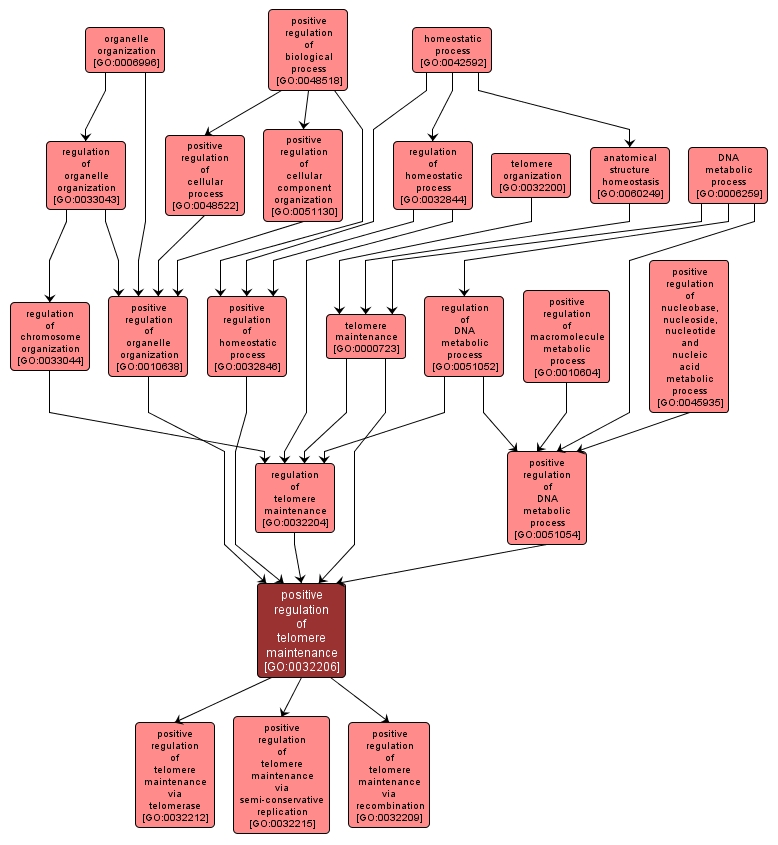GO TERM SUMMARY
|
| Name: |
positive regulation of telomere maintenance |
| Acc: |
GO:0032206 |
| Aspect: |
Biological Process |
| Desc: |
Any process that activates or increases the frequency, rate or extent of a process that affects and monitors the activity of telomeric proteins and the length of telomeric DNA. |
Synonyms:
- up-regulation of telomere maintenance
- upregulation of telomere maintenance
- stimulation of telomere maintenance
- activation of telomere maintenance
- up regulation of telomere maintenance
|
|

|
INTERACTIVE GO GRAPH
|














